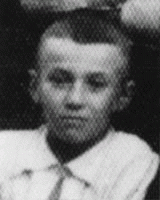You searched for: 区块链源码定制开发【TG���������@EK7676】平台包网搭建区块链源码定制开发【TG���������@EK7676】平台包网搭建39gSaHphgx
<< Previous | Displaying results 1-25 of 619 for "区块链源码定制开发【TG���������@EK7676】平台包网搭建区块链源码定制开发【TG���������@EK7676】平台包网搭建39gSaHphgx" | Next >>
-
Concentration Camps, 1933–39
ArticleLearn about early concentration camps the Nazi regime established in Germany, and the expansion of the camp system during the Holocaust and World War II.

-
Nazi concentration camps, 1933–39
MapThe first concentration camps in Germany were established soon after Hitler's appointment as chancellor in January 1933. The Storm Troopers (SA) and the police established concentration camps to handle the masses of people arrested as alleged political opponents of the regime. These camps were established on the local level throughout Germany. Gradually, most of these early camps were disbanded and replaced by centrally organized concentration camps under the exclusive jurisdiction of the SS…

-
Training for emigration to Palestine
PhotoTraining for emigration to Palestine: a math class at the Caputh Agricultural School. Berlin, Germany, 1930–39.
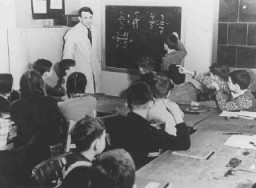
-
1930s street scene in the Jewish quarter of Paris
PhotoStreet scene in the Jewish quarter of Paris before World War II and the Holocaust. Paris, France, 1933–39.

-
Alice Krakauerova Seelenfriedova
ID CardAlice was the third of six children born to Jewish parents in the small Moravian town of Hodonin, where her father ran a dry goods and clothing store. The family spoke both Czech and German at home, and Alice attended a German-language secondary school. After graduating, she married her teenage sweetheart, Otto Seelenfried, who was a chemical engineer. 1933-39: Alice and Otto moved to the town of Jihlava. In 1934 Otto died from a ruptured appendix, and Alice returned to live with her parents in Hodonin.…
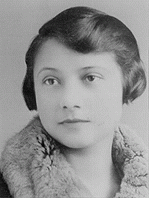
-
Subsequent Nuremberg Proceedings, Case #2: The Milch Case
ArticleThe Milch Case was Case #2 of 12 Subsequent Nuremberg Proceedings against leading German industrialists, military figures, SS perpetrators, and others.

-
Three generations of a Jewish family pose for a group photograph
PhotoThree generations of a Jewish family pose for a group photograph. Vilna, 1938-39. The photo was taken during daughter Mina's visit from Montreal. Among those pictured are Mina (Katz) Herman and her daughter, Audrey (front row, second from the right), Itzik Katz, Mina's brother (standing at the far left) and Malka Katz, Mina's mother (front row, center).
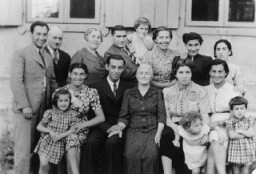
-
Bella Jakubowicz
ID CardBella was the oldest of four children born to a Jewish family in the small city of Sosnowiec, in Polish Silesia. Her father owned a successful knitting factory. In 1938, when she was 12, Bella began attending a private secondary school. 1933-39: When Bella's family returned from vacation in late August 1939, there were rumors of war. Her mother tried to stock up on food but the stores were already out of staples. The Germans took Sosnowiec on September 4; two weeks later they interned all the Jewish men…
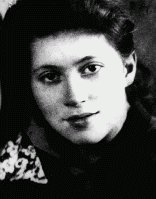
-
Blanka Rothschild describes the beginning of the German invasion of Poland when she and her family were in Lodz
Oral HistoryBlanka was an only child in a close-knit family in Lodz, Poland. Her father died in 1937. After the German invasion of Poland, Blanka and her mother remained in Lodz with Blanka's grandmother, who was unable to travel. Along with other relatives, they were forced into the Lodz ghetto in 1940. There, Blanka worked in a bakery. She and her mother later worked in a hospital in the Lodz ghetto, where they remained until late 1944 when they were deported to the Ravensbrueck camp in Germany. From Ravensbrueck,…

-
Ezra Zelig Szabasson
ID CardEzra Zelig, who was called Zelig by family and friends, worked in the lumber business in Kozienice, a village by the Kozienice birch forest. He was married and the father of six children. A prominent member of the community, Zelig served on Kozienice's city council, and was also president of the local Zionist organization. 1933-39: In 1937 Zelig tried to obtain visas for his family to immigrate to Palestine [the Yishuv], at that time a British protectorate, but was unsuccessful because of the…

-
Chaya Szabasson Rubinstein
ID CardIn 1930 Chaya married Mordecai Rubinstein, a businessman, and moved with him from her hometown of Kozienice to the nearby city of Radom. Chaya had been raised in a religious, Yiddish-speaking Jewish family, and her father owned a lumber mill near the Kozienice birch forest. In Radom, Chaya's husband operated a small bus line. 1933-39: Chaya gave birth to a daughter, Gila, in 1933. In the mid 1930s the Rubinsteins moved back to Kozienice. There, they were trapped when German troops invaded [Poland] in…
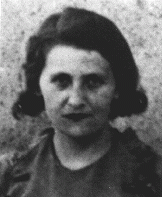
-
Mordecai Pinchas Szabasson
ID CardMordecai, known in Yiddish as Motl, was born to a religious Jewish family with six children. His hometown of Kozienice, located near a birch forest, had an important lumber industry. After graduating from secondary school, Mordecai entered the lumber business. His small, successful company bought and sold lumber. 1933-39: A few months after the Germans invaded Poland in September 1939, Mordecai's father was warned to leave because, as a prominent member of the community, it was likely that the Germans…
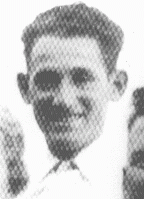
-
Lewek Szabasson
ID CardLewek and his five brothers and sisters were born to religious Jewish parents in the town of Kozienice, situated in east central Poland near a birch forest. Lewek's father owned a sawmill, and when Lewek and his brothers were grown, they helped their father manage the family business. 1933-39: When Lewek was 15 he attended an agricultural school near Kozienice, because he wanted to immigrate to Palestine [Aliyah] to work the land. But after the Nazis rose to power in Germany in 1933, immigration…

-
Chaya Medalion
ID CardChaya and her brother and two sisters were raised in a religious, Yiddish-speaking home in the town of Kozienice, situated in east central Poland near a large birch forest. As a child, Chaya learned Hebrew. She attended Polish public schools and graduated at 14. Her father owned a factory that produced handmade shoes. 1933-39: Chaya was active in the Zionist movement, through which she met her boyfriend, Lewek Szabasson. Chaya and Lewek would stroll on Kozienice's main promenade which was at the…
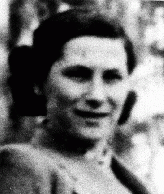
-
Vita Rivkina
ID CardBecause both of her parents had died by the time Vita was 5 years old, she went to live with her cousins. At the age of 18, Vita married Iosif Rivkin, and the couple moved to Minsk where they raised three daughters--Hacia, Dora and Berta. 1933-39: By the early 1930s, the Rivkin family lived on Novomesnitskaya Street in central Minsk, near the Svisloch River. In the 1930s the girls attended Soviet state schools and were members of the Soviet youth organization, Young Pioneers. By the late 1930s Minsk was…

-
Israel Milkow
ID CardIsrael was born to a religious Jewish family living in the town of Slonim. He was called Yisroel by his Yiddish-speaking parents. Israel's father, Lazar Milkow, was a baker who supported his family on a meager income. 1937-39: Israel's grandparents and many of his mother's relatives lived in a nearby village called Kaslovchina. Each summer one of the Milkow boys was invited to stay in Kaslovchina with their Uncle Herschel who worked as a farmer and horse trader. In September 1939 Slonim became part of the…
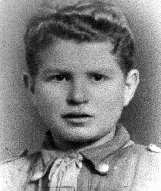
-
Abraham Roman Ellenbogen
ID CardAbraham was the oldest of five children born to a Jewish family in the central Polish town of Rozwadow, where his father was a produce wholesaler. Abraham attended secondary school in the nearby town of Rzeszow and then went on to complete an undergraduate degree at the University of Cracow. 1933-39: Abraham was accepted to law school, despite quotas restricting the number of Jews allowed to enter, and in 1937 he set up a practice in Rozwadow. Two years later, on September 1, 1939, Germany invaded Poland.…
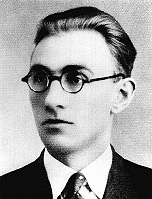
-
Edith Goldman Bielawski
ID CardEdith's parents owned a cotton factory in the town of Wegrow [in Poland]. The Goldmans were a religious family, and raised Edith, her brother and three sisters to strictly observe the Sabbath, Jewish holidays and the dietary laws. 1933-39: Edith attended public school, and also studied at the Beis Yakov religious school for girls where she learned Hebrew, the Bible and Jewish history. Her favorite hobby was knitting, and after finishing secondary school she learned the quilt-making trade. In the…
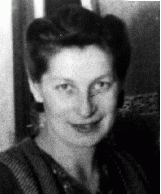
-
Tonie Frederika Kaufmann Soep
ID CardTonie's parents came to the Netherlands from Germany in the 1880s, and their six children were born in Amsterdam. As a child, Tonie studied the piano, and she excelled in French. When she married Abraham Soep, a diamond manufacturer, Tonie adopted her husband's observant Jewish practices. Their three children were born in 1919, 1923, and 1924. 1933-39: Tonie's husband served for many years as the president of the Amsterdam Jewish community. The Soeps had a large and comfortable home. Tonie and Abraham…
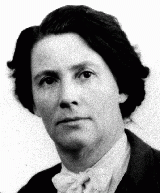
-
Abraham Soep
ID CardAbraham, known as "Bram," was born to a religious Jewish family in Amsterdam. After graduating from high school, Bram went into the diamond business with his father. By 1924 he and his wife, Tonie, had three children. Bram served as president of the Amsterdam Jewish community. 1933-39: The Soeps had a large and comfortable home. Bram and his wife often traveled abroad, and each summer the family rented a home near the seashore in Zandvoort. In 1937 Bram's son Benno joined him in the diamond…

-
Moshe Galek
ID CardMoshe was one of eight children born to Jewish parents in Sochocin, a predominantly Catholic village near Warsaw. Moshe was a self-made man, having founded a successful pearl-button factory in the village. While in his thirties, he married Fela Perznianko, the daughter of a prominent attorney from nearby Zakroczym. He brought his new wife to Sochocin, where they raised four daughters. 1933-39: In 1936 the Galeks moved to Warsaw, attracted by the city's cultural life. When Germany invaded Poland on…
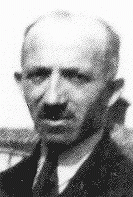
-
Albert Gani
ID CardAlbert and his family lived in Preveza, a town with a Jewish population of 300 that was located on the Ionian seashore. Albert's father had a small textile shop. The Ganis were of Romaniot descent, Jews whose ancestors had lived in Greece and the Balkans for more than a thousand years. 1933-39: After graduating from high school, Albert assisted his father in the family textile shop. A quiet and reserved young man, Albert enjoyed spending time at home with his family. Albert loved taking excursions with…
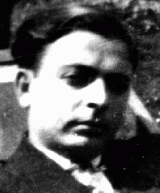
-
Joseph Gani
ID CardJoseph and his family lived in Preveza, a town with a Jewish population of 300 that was located on the Ionian seashore. Joseph's father had a small textile shop. The Ganis were of Romaniot descent, Jews whose ancestors had lived in Greece and the Balkans for more than a thousand years. 1933-39: Joseph attended Greek public school in Preveza. He also received a religious education; the local rabbi would come to the public school for several hours a week to give religious instruction to the Jewish students.…
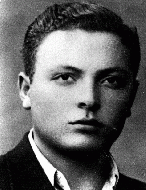
-
Baruch Aaron Szabasson
ID CardBaruch was known by his family and friends as Buzek. He came from the east central Polish town of Kozienice. Kozienice was a popular vacation spot situated near lakes and a birch forest. Baruch's father worked in the lumber business. 1933-39: Baruch attended public school, and in the afternoons he also went to Jewish religious school. On Friday nights for the sabbath, Baruch would go to his grandparents' house, where his relatives would gather to visit with one another. Baruch would run to his grandfather…
